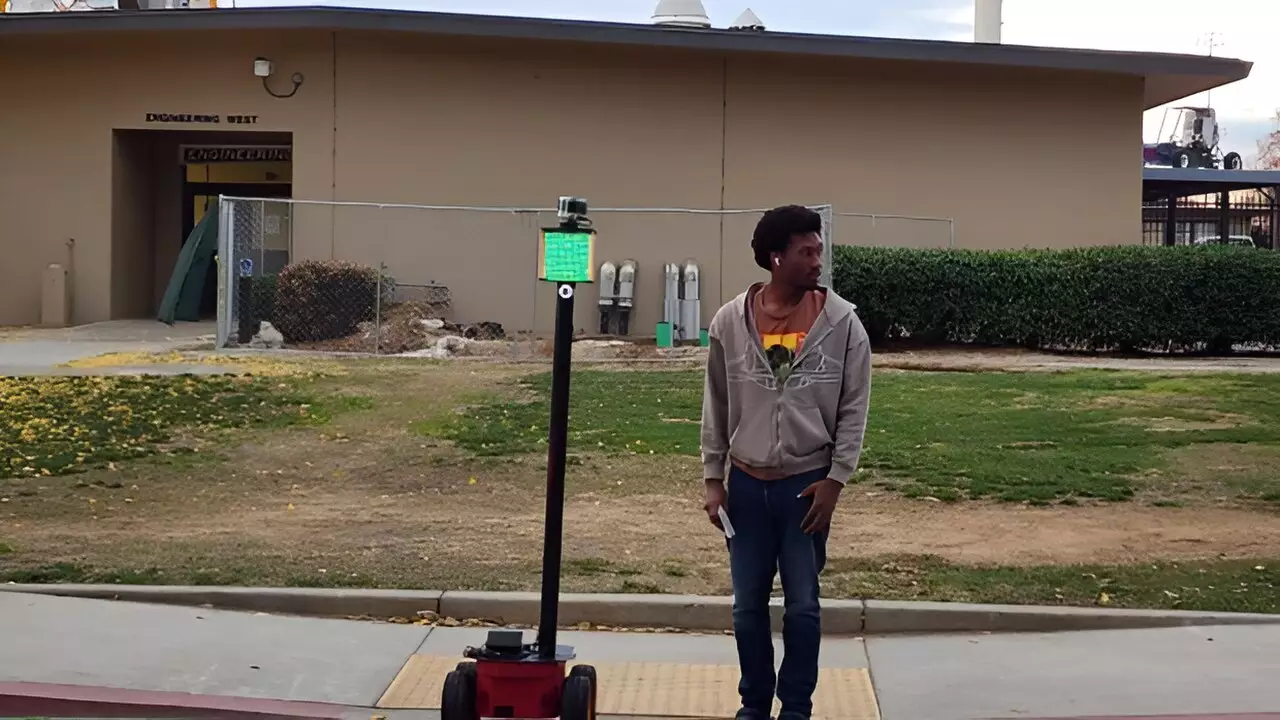The CrossBot prototype is a groundbreaking innovation in the realm of crosswalk safety. Created by Hovannes Kulhandjian, an associate professor in electrical and computer engineering at Fresno State, this robot resembles a small lawnmower with a single black pole and a tablet-sized screen attached. Equipped with advanced sensors such as Lidar, a microphone, radar, and video camera capabilities, the CrossBot has the ability to provide a 360-degree view of its environment. Its main function is to protect kids in crosswalks by signaling when it is safe to cross through the use of its screen turning green when the path is clear.
Despite the innovative design of the CrossBot, there are concerns raised by some parents regarding its reliability and the potential impact on human crossing guards. While some see the robot as a viable solution to the crossing guard shortage in the Bay Area and believe it can complement human efforts, others, like parent Kelly Lathrop of Lafayette, express skepticism. Lathrop emphasizes the importance of human crossing guards who know the children and are actively present, creating a sense of security that a robot may not be able to provide. Angela Roberts, another parent, acknowledges the turnover in crossing guards but remains uncertain about trusting a robot in such a critical role.
The emergence of robots in various industries and sectors is not a new phenomenon. From transporting goods in storage facilities to handling security inspections in airports, robots are becoming increasingly integrated into daily operations. According to the Robotics Industry Size & Share Analysis Report by Mordor Intelligence, the global robotics market size is projected to reach $95.93 billion by 2029, indicating a significant growth in the use of robotics. While robots offer efficiency and accuracy, there are also concerns about potential job displacement and the overall impact on human labor.
Kulhandjian, the creator of the CrossBot, emphasizes that his invention is intended to enhance human efforts rather than replace them. With a price tag of $15,000 to $17,000 for a school district to purchase, the CrossBot is seen as a cost-effective solution to the ongoing crossing guard shortage issue. While Kulhandjian acknowledges the possibility of adding additional features to the robot, such as a large red stop sign, he maintains that the primary goal is to improve crosswalk safety and provide an additional layer of protection for children.
As pedestrian-related accidents continue to pose a significant risk, especially for children under 14, there is a growing need for innovative solutions to improve safety on the streets. The CrossBot represents a step towards integrating technology into traditional safety measures, offering a unique approach to addressing the challenges faced by crossing guards and school districts. While concerns remain about the reliability and impact of robotic solutions, the potential benefits of the CrossBot in enhancing crosswalk safety cannot be overlooked. As technology continues to evolve, the role of robots in ensuring public safety is likely to expand, raising questions about the balance between human intervention and automated systems.


Leave a Reply